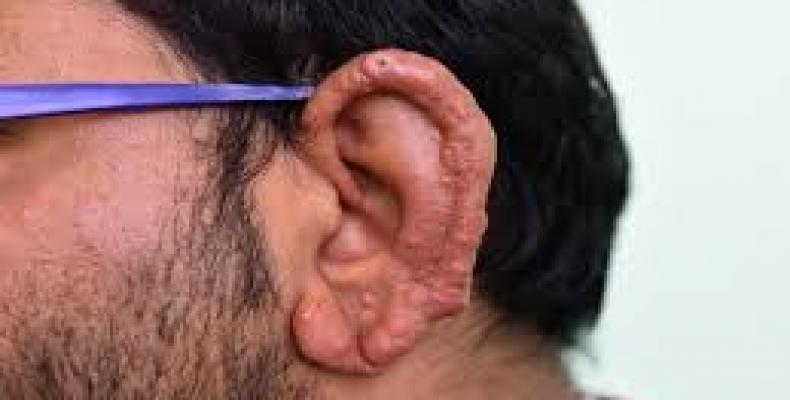Bogota, March 1 (RHC)-- Leprosy continues to plague 24 out of 35 countries in Latin America with Health Ministries registering an average of 27,000 new cases yearly. In Colombia alone, almost 400 cases were reported last year. Deputy director of the national Ministry of Health, Jose Valderrama, warned that, though the number of those infected have decreased, leprosy continues to be a serious concern for the nation.
There is a connotation that leprosy is extinct, but it is a reality (...) In Colombia there is a program that allocates resources to carry out actions to identify cases," said Valderrama in an interview with W Radio. The minister explained that many times health experts will treat symptoms as any other dermatosis, failing to recognize it as leprosy. However, Valderrama said it sufficiently controls the situation, making any national intervention unnecessary.
"The essential key to reducing damage among new cases is timely diagnosis, at this time people who were diagnosed in Risaralda receive treatment," said Alberto Medina Cordoba, a professional medical specialized expert and coordinator of Tuberculosis and Leprosy of the Departmental Health Secretariat.
Colombia has seen an 84 percent decrease since 1999 when 1,974 cases were registered, lowering the annual figure to only 400 or 500. Last year, the city of Nieva, Colombia reported four cases out of every 100,000 inhabitants. An additional 70 percent of the nation’s cases are multibacillary, lesions leprosy. In many countries, the sickness has been removed from the list of public health concerns, due to the low infection rate.
"We ended 2017 with 394 cases (of leprosy in Colombia). At a global level, we are in a position considered to be 'en route to elimination'," said the deputy director of the Ministry of Health. However, it’s a long road especially considering the level of poverty existing in Latin America, combined which provides the perfect environment for the bacteria-linked disease.
"Argentina, Colombia, Cuba, Mexico, Paraguay and the Dominican Republic detect more than 100 new cases per year and highlights Brazil, which has 92% of the burden of the disease," Isabelle Roger, advisor on Diseases, told EFE.
Leprosy is a contagious skin disease which can be broken into two types, multibacillary and paucibacillary. Both affect the skin and will manifest in lesions across the epidermis, with possible damage to the peripheral nerves, mucosa of the upper respiratory tract or eyes and if left untreated can cause the loss of extremities.
Leprosy remains prevalent in 24 Latin America countries

Articles en relation
Commentaires
Laissez un commentaire
Tous les champs sont requisPlus de visites
- Fermeté et dignité face à l'abus
- Opération Northwoods », le plan de bombardement par lequel les États-Unis voulaient justifier leur invasion de Cuba
- Le ministre des affaires étrangères rejette les nouvelles mesures prises par les États-Unis à l'encontre de Cuba
- Le Venezuela exprime son soutien à Cuba face à la décision du gouvernement américain
- Le Conseil des ministres approuve le programme gouvernemental visant à corriger les distorsions et à relancer l'économie d'ici 2025 (+ Vidéo)

